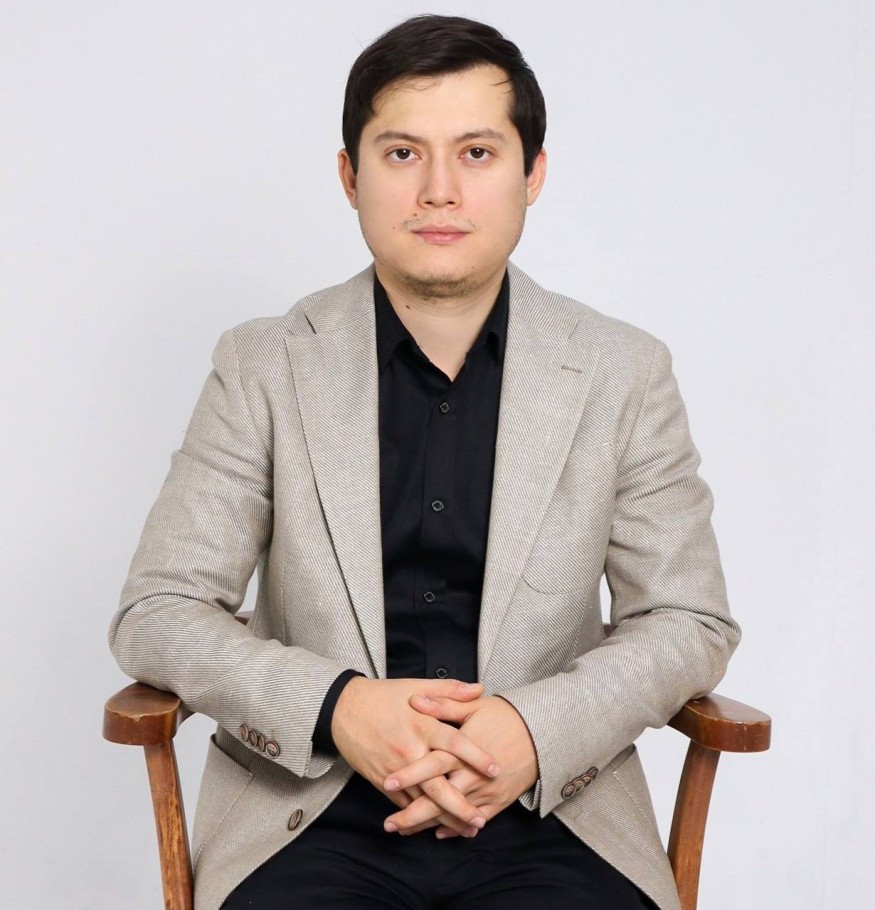
The issue of cybersecurity has become increasingly significant in recent years, and this trend is expected to continue. In particular, AI-powered phishing attacks have become more sophisticated and convincing, making them a major concern for organizations and individuals. In the spring of this year, Marks & Spencer, a well-known British retail chain, suffered a severe cyberattack, resulting in the temporary halt of its online sales. It is anticipated that the company will not resume operations until July 2025 at the earliest. However, an international expert, Rassul Rakhimzhan, addresses similar issues in the realm of digital business, inter alia. The engineer who transitioned from system security in the university to working with companies like Google and Renault created a special cybersecurity platform, and his architecture ensures the highest level of security and reliability. His journey into the realm of IT was a long and arduous one, leading him to become a seasoned professional and a highly esteemed expert in the domain of cybersecurity. This article delves into his remarkable contributions as an innovator in the development of blockchain-based authentication systems, highlighting his key career milestones.
A Breakthrough in Cybersecurity
As an experienced engineer with a track record of working with international clients and leading large teams, Rassul Rakhimzhan set out on what he considered the most ambitious project in his career—DefaceID. This is the platform that decentralizes user identities, protects them, and puts them under the user's control.
Rassul is a co-founder and a chief engineer; he personally studied the Motoko and Rust programming languages to develop the canister architecture, cryptographic algorithms, and on-chain reputation system.
"To support DefaceID's core canister development on the Internet Computer, I recently learned Motoko and threshold-signature schemes," Rakhimzhan notes. "I've continuously upskilled: from mastering Docker & Testcontainers for full end-to-end NestJS test suites to picking up Rust for additional ICP modules, ensuring I stay at the cutting edge."
Certainly, no startup can be expected to proceed uneventfully. One of the biggest technical challenges was the process of creating wallet-less authentication using threshold signatures, as well as integrating with mobile applications using custom React Native modules. This allows users to verify their identity without revealing personal data.
Rassul Rakhimzhan conducted attack simulations and clarified consensus parameters to ensure the security of the system in practice. He also verified cryptographic evidence and ensured the integrity of the platform. The result is a platform that enables Web3 applications to scale user onboarding safely without a single point of failure. This reduces integration overhead by up to 75%.
Technical Architecture and Implementation
DefaceID is a unique Web3 platform. The entire infrastructure of the project (frontend, backend, and neural network that determines a person) is hosted on the Internet Computer Protocol (INC) blockchain, utilizing an architecture that incorporates identification anchors, threshold-based oracles, and zero-knowledge proof mechanisms. This architecture eliminates the requirement for centralized servers, while also providing protection against Sybil attacks.
"I architected DefaceID, a decentralized identity canister on the Internet Computer... eliminating central servers and foiling Sybil attacks, iterating cryptographic proofs and consensus parameters to ensure robust identity guarantees under real-world adversarial conditions," Rakhimzhan shared.
Furthermore, he developed a module for React Native that enables the seamless integration of mobile applications with ICP canisters. This solution offers instant user registration, eliminates the need for wallets in the authentication process, and provides real-time verification of reputation.
"Web3 login screens powered by DefaceID—users onboard in under 30 seconds, with seamless wallet-less auth and instant access gating."
DefaceID uses threshold signatures, which are the algorithm that protects the entire blockchain and also allows for the implementation of decentralized bridges between other blockchains, so the application, although written in ICP, can theoretically be used in any blockchain. This mechanism allows people to distribute the signing process among several network participants, so that only a part (for example, 3 out of 5) of the keys are required to confirm a transaction or issue an attestation, rather than one centralized secret. This eliminates single points of failure and makes the system resistant to the compromise of individual nodes.
This scheme maintains a high level of cryptographic security that meets the requirements of Web3 applications, while ensuring reliable system operation even in the case of partial node failure. This is especially true for DefaceID, where the requirements for reliability and privacy are particularly high.
How Innovative Ideas Led to Public Recognition
Throughout his career, Rassul Rakhimzhan has consistently shown the qualities of a technology leader. In each team, whether it was a startup or an international corporation, he took on key architectural decisions and ensured that complex technical concepts became understandable and applicable in practice. He made CI/CD work in places where it seemed impossible. At EPAM, for example, he was the specialist who was approached not for code, but for an engineering approach that could be scaled.
"I led high-visibility projects (Google WebGL showcase, Renault interactive site, Toblerone campaigns) and advanced accessibility from Lighthouse from 40 to 100, honing large-client delivery. I also designed an OAuth2 integration serving more than 3 million monthly users across eight platforms, introduced TDD standards to the engineering team, and mentored across the stack," Rakhimzhan noticed.
At MediaMonks, Rakhimzhan is recognized by the public because his approaches are becoming industry standards. He has achieved that his WebGL optimization work improved Lighthouse accessibility scores, meeting WCAG AAA standards. Colleagues adopt his methods: his authorization and optimization solutions are borrowed from related teams and projects. Within the technical community, he is valued as a person capable of rethinking familiar patterns, whether in the field of identification, cryptography, or mobile-to-chain integration. Thanks to this level of expertise, he was invited to participate in the major international initiative. In this program, only trusted developers with a deep understanding of blockchain protocols and who are able to influence their development receive access. Moreover, Rakhimzhan has been a Senior Member of IEEE since November 2024.
"Early in my career, I helped secure my university's IT system—today, I support peer review efforts and share knowledge to protect users everywhere. Now I regularly run TDD and security workshops," Rassul Rakhimzhan comments on his success.
The media did not stay away either: materials about his projects appeared in Bloomberg, and DefaceID is already being discussed as a possible basis for Web3 identification without needing a wallet or passwords. But, as Rassul himself admits, the main metric for him is not media coverage, but how widely and deeply his ideas are applied by others.
Current Projects and Future Vision
Rakhimzhan continues to work on his startup. There are plans to scale DefaceID into a go-to on-chain identity layer—expanding to new blockchains and integrating with major DApps.
The company EPAM Systems, in which Rassul is now a Senior Software Engineer, is actively growing and developing. "It regularly featured on Forbes' 'Fastest-Growing Public Tech Companies' list since 2013, and partners with numerous Fortune 500 enterprises for digital platform engineering," Rassul Rakhimzhan commented.
Among other things, Rakhimzhan deepens his Rust & ICP expertise and adds more open-source tools for seamless convergence of Web 3 and mobile devices. His current purpose is to lead larger cross-functional teams at EPAM, driving innovation in React Native and decentralized apps. His first experience at the university was not only a personal triumph for Rassul but also a turning point in his career. From then on, security, scalability, and architecture became his main focus.
© 2025 ScienceTimes.com All rights reserved. Do not reproduce without permission. The window to the world of Science Times.












